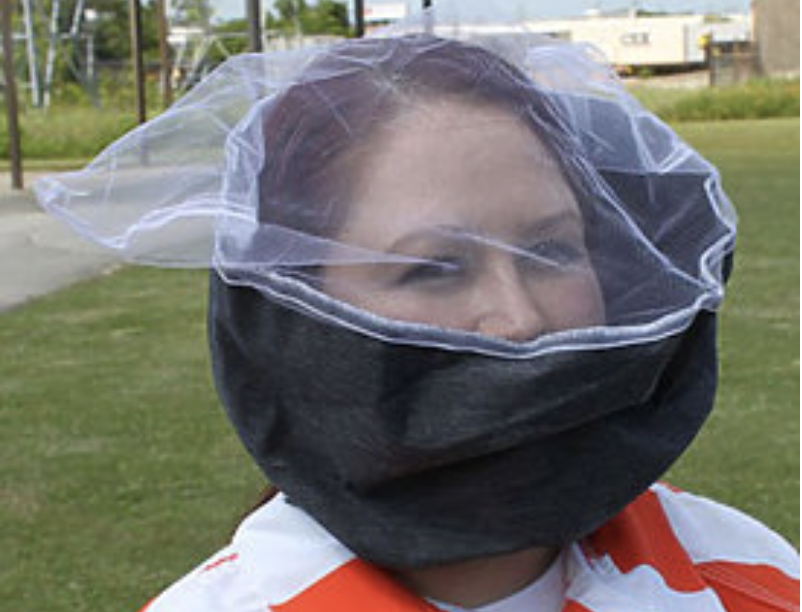
An AFP review found the risks outweighed the benefits of using spit hoods. Photo: ICS Jail Supplies.
The Australian Federal Police (AFP) has announced its officers will no longer use spit hoods, including in the ACT.
It’s the result of an internal review into whether using spit hoods was a “reasonable and proportionate response” against those who allegedly assaulted police by spitting saliva or blood.
The ACT had previously been reported to the UN anti-torture watchdog over their usage of the devices after it was revealed in last year’s budget estimates hearing that they had been used on a 16-year-old girl.
The AFP issued a media statement on Friday (14 April) that the review found even though spit hoods were only used on “limited occasions” by ACT Police, their use wasn’t justified.
“Police always need to ensure reasonable force is used against individuals who are assaulting law enforcement,” it said.
“The review found the risk of using spit hoods outweighed the benefits of their use, given they are ineffective in protecting against transmissible diseases.”
ACT Policing Acting Chief Police Officer Linda Champion said this brought the force in line with other jurisdictions.
“Having said that, it’s an awful act [to spit], it’s an assault on police, and it has psychological implications for our members,” she said.
“We will be pushing the government for legislative changes to introduce testing of diseases for those who do bite or spit, as well as higher penalties.”
The AFP said it was providing equipment and implementing procedures to better protect members from spitting and biting.
“Members of the AFP put their lives at risk every day to protect the community,” it stated.
“These members are fathers, mothers, daughters, sons, brothers and sisters.
“The community needs to have confidence in police, and the AFP does not take for granted the trust the public places in our members.”
Reaction to the news in the community has been mixed.
The police union said it could not support this ban while legislation didn’t exist to mandate the blood and saliva testing of those who “weaponise bodily fluids against police”.
“Without mandatory testing to rule out offenders being infected with particular diseases, police officers face periods of up to six months of mental trauma and uncertainty before they can be sure that they haven’t been infected with a transmissible disease,” Australian Federal Police Association (AFPA) president Alex Caruana said.
“Mandatory testing could reduce this period if certain diseases could be eliminated from the testing regime straight away.
“The government must do more to protect police from occupational violence in this respect.”
Mr Caruana pointed out that some jurisdictions, such as the Northern Territory and NSW, had legislation in place to mandate testing and he expected the government to make sure all police members were afforded the same “minimum level” of protection.
“AFP members are now faced with the reality of working without any PPE [personal protective equipment] to minimise their exposure to bodily fluids,” he said.
“Offenders are still able to spit while handcuffed or restrained.
“This is clearly an unacceptable position to leave police in, and the AFPA will be engaging strongly with the government to introduce appropriate legislation to mandate testing.”
Meanwhile, ACT Human Rights Commissioner Dr Helen Watchirs said it was the right choice.
“In our view, spit hoods can pose a serious risk of suffocation and are not the least restrictive means necessary to detain people. Therefore their use by force is not reasonable nor proportionate,” she said.
“We agree that spit hoods are ineffective in protecting against transmissible disease, and other more effective means are available such as PPE, as used in correctional detention.”
ACT Greens police spokesperson Andrew Braddock said while no one deserved to be spat on at work, changes to the legislation regarding medical testing needed to be measured.
“Our justice system works better when it treats people with dignity,” he said.
“It’s now important to ensure any response in relation to blood testing is based on expert medical advice as to the level of actual risk of transmission.”


















